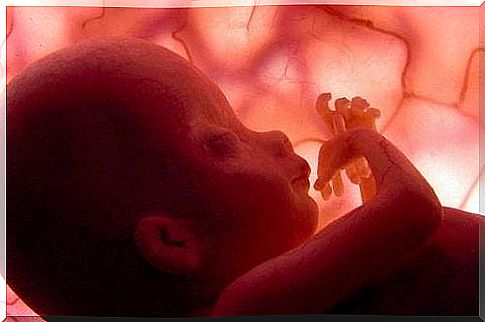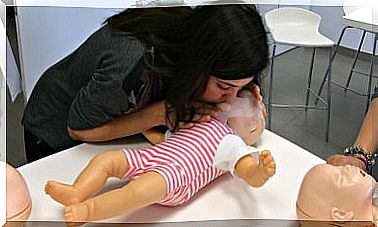What Is A Molar Pregnancy?

A molar pregnancy is an abnormality in which the pregnancy does not reach full term. This occurs when the fertilized egg grows into a group of vesicles (cysts).
Technically speaking, the trophoblast, the cells formed in the placenta, will reproduce uncontrollably. These cells form a type of grape cluster called mola hydatidosa.
These atypical pregnancies can be complete or incomplete:
- complete: when the mola contains no fruit.
- incomplete: in addition to the mola, an embryo is also found.
- Twins may also be present, sharing space with the mola.
This type of pregnancy generally results from an error during conception. In a complete molar pregnancy, an egg without hereditary material is fertilized by a sperm cell. The hereditary contribution then comes entirely from the father.
In an incomplete molar pregnancy , there is hereditary material from the mother. But the father ‘s material has doubled. This ultimately results in an embryo with 69 chromosomes instead of what is considered normal: 46.
In such a pregnancy, the embryo is not viable. The embryo will be overgrown due to the abnormal growth of the mola.
How many times does this kind of situation arise? A molar pregnancy occurs in about 0.5 to 1 times in 1000 pregnancies.
Risk factors for a molar pregnancy
The following are considered risk factors:
- Pregnancy in women over 40 years of age. This abnormality is more common in pregnancies in this age group.
- Have already had a molar pregnancy.
- Pregnant women who have had a spontaneous abortion.
- Nutrient deficiency such as too little protein and deficiency of carotene (vitamin A).
- Supportive Fertility Treatment.

How is a molar pregnancy and its symptoms recognized?
In general , the typical pregnancy symptoms will occur in the pregnant mother. These include:
- the absence of menstruation
- nausea
- the belly that grows
There are also symptoms that are not associated with a healthy pregnancy. It is necessary to go for a check-up and get a diagnosis.
Some of these pregnancy symptoms are:
- vaginal bleeding or loss of molar tissue in the form of a cluster
- nausea and vomiting
- high bloodpressure
- swelling of the lower extremities
- anemia
- ovarian cysts
- a very large or very small uterus
- lack of fetal movement. For example, no movements in the amniotic sac or a heartbeat.
In any case, an expert will conduct an analytical examination of the levels of the pregnancy hormone hCG.
By performing both a pelvic analysis and an ultrasound, the abnormal size of the uterus can be noticed. The formation of the cluster of cysts and the presence of an embryo are also noted.
How is a molar pregnancy treated medically?
Such a pregnancy often leads to a spontaneous abortion. To avoid this, the mola is removed by surgery, by suction curettage or with the help of medication.
In any case, this is a pregnancy in which no embryo is present. Or, if there is an embryo, it is not viable.
Traces may still remain after the molar tissue has been removed. As a result, there is a risk that it will reproduce again. This multiplication of abnormal tissue results in persistent trophoblastic disease.
This situation occurs in 15 to 20% of the cases in complete molar pregnancies and in 5% in incomplete molar pregnancies.
Possible complications of a molar pregnancy
The situation caused by molar pregnancies can be complicated.
- In view of possible complications in these atypical pregnancies, a correct diagnosis is important. Thus, the woman maintains her reproductive health. In addition, it increases her chances of a future normal pregnancy.
- On the one hand, the mola penetrate deeply into the uterine tissue. This causes pain and bleeding with vaginal discharge. In a molar pregnancy, the fetus does not grow.

- On the other hand , there is a high risk of developing a choriocarcinoma. This is a certain type of cancer. That happens when a persistent trophoblastic disease occurs. This is treated with chemotherapy. Depending on the severity of the cancer, a hysterectomy is performed.
- Pregnancy poisoning is another possible complication. The presence of the molar tissue can cause high blood pressure.
- Another rare complication affects the thyroid gland.
What to do after a molar pregnancy?
A woman who has experienced such a failed pregnancy is still able to conceive again. Provided the diagnosis and treatment were done temporarily. In addition, she must be under medical supervision.
Usually the midwife suggests waiting a year. During this period, it must be checked that there are no more traces of the molar tissue. This maintains the health of the uterus.









